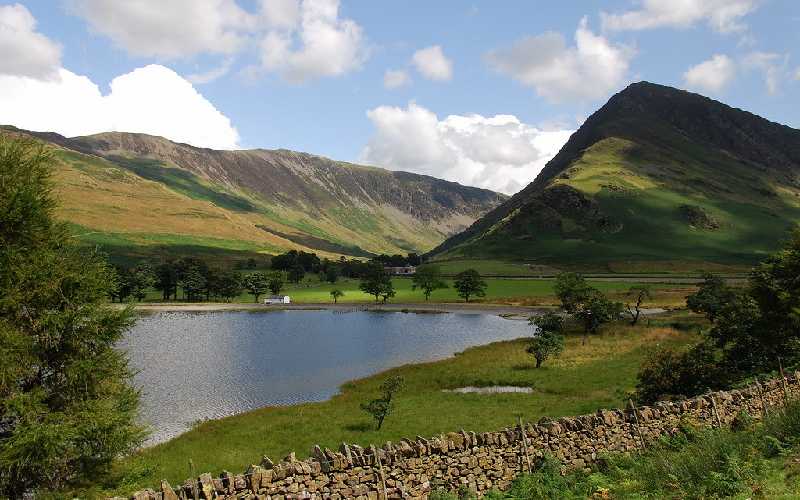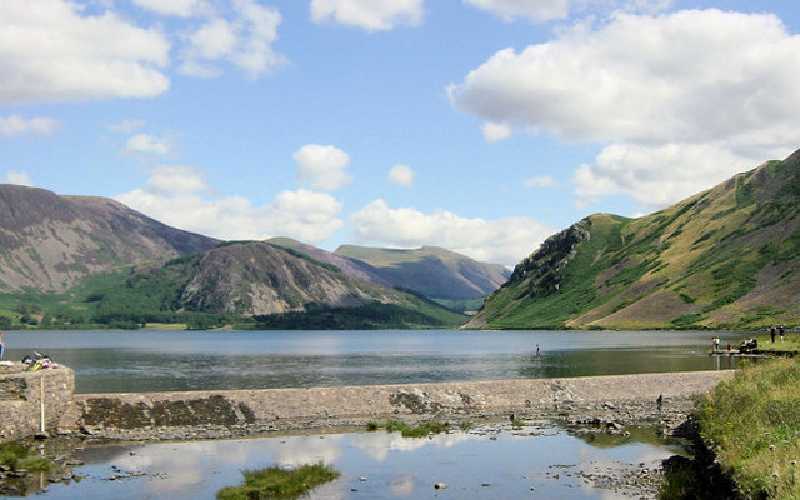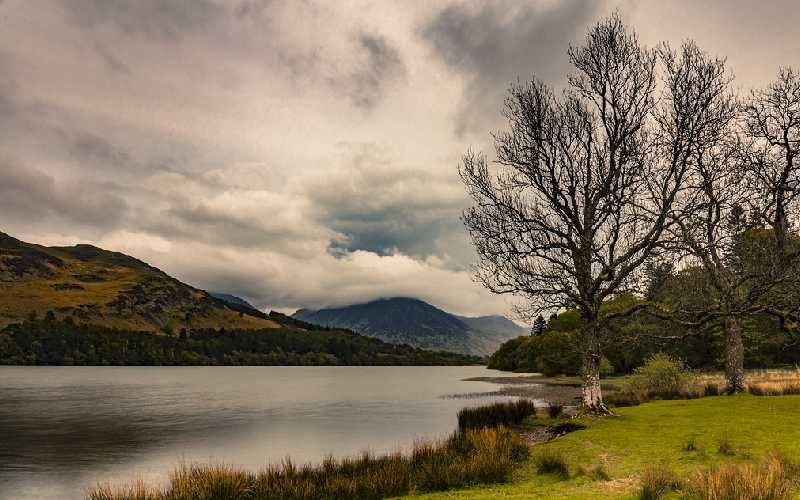The Lake District is popular with climbing enthusiasts thanks to its high concentration of crags and range of climbing grades. The majority of the rock in the Lake District is made up from volcanic rocks called ‘Complexes’. These complexes are sedimentary rocks that have been altered by contact with hot solutions, either through the molten rock they were formed on or by further heating when the rock was uplifted. This has led to a variety of different rocks including volcanic breccias and gabbros, and also more esoteric varieties like tuffs and lavas.
The Central Fells and Eastern Fells
Climbing in the Lake District is usually split into two parts: the ‘Central Fells’ on one side of Ullswater, and the ‘Eastern Fells’ on the other. The Central Fells are composed of volcanic rock, whereas the Eastern Fells are granite based. The two areas have different types of climbing: bouldering is more popular in the Central Fells because it is usually steeper than elsewhere in the district, whilst cragging is most popular in the Eastern Fells, where there are more crags and big walls with longer routes.
Difficulty Levels of Lake District Climbing
The Lake District offers climbing across all grades, but it is often easier to climb harder due to the nature of many of the rocks. This evens out the grading system somewhat: VDiff is often comparable with HVS, VS can be as testing as VS, and E3 can be as tough as E4.
Bouldering in the Lake District
Bouldering in the Lake District is done on many of the volcanic complexes (see above). The three most popular bouldering areas are Harrison’s Rocks, Langdale and Esk Hause. Harrison’s Rocks is popular for its ease of access from the car parks at the end of Cockley Beck road and also for having a nice variety of climbing problems on many different types of rock. Here there are about 50 boulder problems from VDiff to E4, which are often steeply overhanging.
In Langdale, there are about 20 boulder problems ranging from VDiff to E4. These can be found on the Lathkil Hotel Roof and also in the crag “The Swallows Nest” between Harrison’s Rocks and Langdale. Here you will find some famous climbs like “Voodoo Child” (E4 7a) and “The Optic Slide” (E3 5c).
In the mountains above Esk Hause there is a boulder field known, appropriately enough as ‘Tors Boulders’. Here you will find about 40 boulder problems ranging from VDiff to E4. This is an area suitable for all levels of climber: from beginner upwards. Another area well suited to beginners is the crag ‘Cove’ between Langdale and Esk Hause, which offers about 20 problems from VDiff to E3.
Main Lake District Climbing Crags
The main climbing crags in the Lake District are found on the Eastern Fells of Buttermere, Ennerdale, Loweswater and Wasdale.
Buttermere

Buttermere offers great cragging on a variety of rock. The angles here tend to be steeper than in the Central Fells and there are more trad lines (i.e. not bolted) ranging from HVS to E3, allowing you plenty of scope for improvement or redpoint attempts at harder grades.
Ennerdale

At Ennerdale, the well known crag “The Old Man of Coniston” has some great routes, including “Cock in a Void” (VS 4c) and “Party Wall” (E2 5b). A little further up Ennerdale is Wast Water, which offers many more smaller crags with easier climbing, but still plenty to be found at the top end of the grades.
Loweswater

Just over the border in Cumbria, there are some great crags to be found on both Loweswater and Wasdale. At Loweswater you will find “Hart Crag” which offers a good range of easier routes, without being too blank.
Wasdale Head
At Wasdale Head, there are a number of other smaller crags and boulders that offer easier routes on volcanic tuff. All these areas are within easy reach of the many hostels, B & Bs and hotels in this area.
Langdale – The Lake Districts largest Concentration of Rock Climbs
Langdale is home to the Lake District’s largest concentration of rock climbs – over 1100 at last count. The rock is volcanic in origin, mainly andesite tuff. The climbing tends to be steep (E1-E4) but solid. This is a popular crag for fall climbers because of the quality of the rock. There are routes ranging from 12 m up to about 30 m long, equipped with around 200 bolts giving plenty of protection. The climbing is mainly sport with a handful of trad climbs on the longer routes – one particular route, “The Sickle”, has 13 pegs and 4 bolts.
If you enjoyed this article you might also like to read about The 10 Stunning National Parks in England

1 thought on “Lake District Climbing”